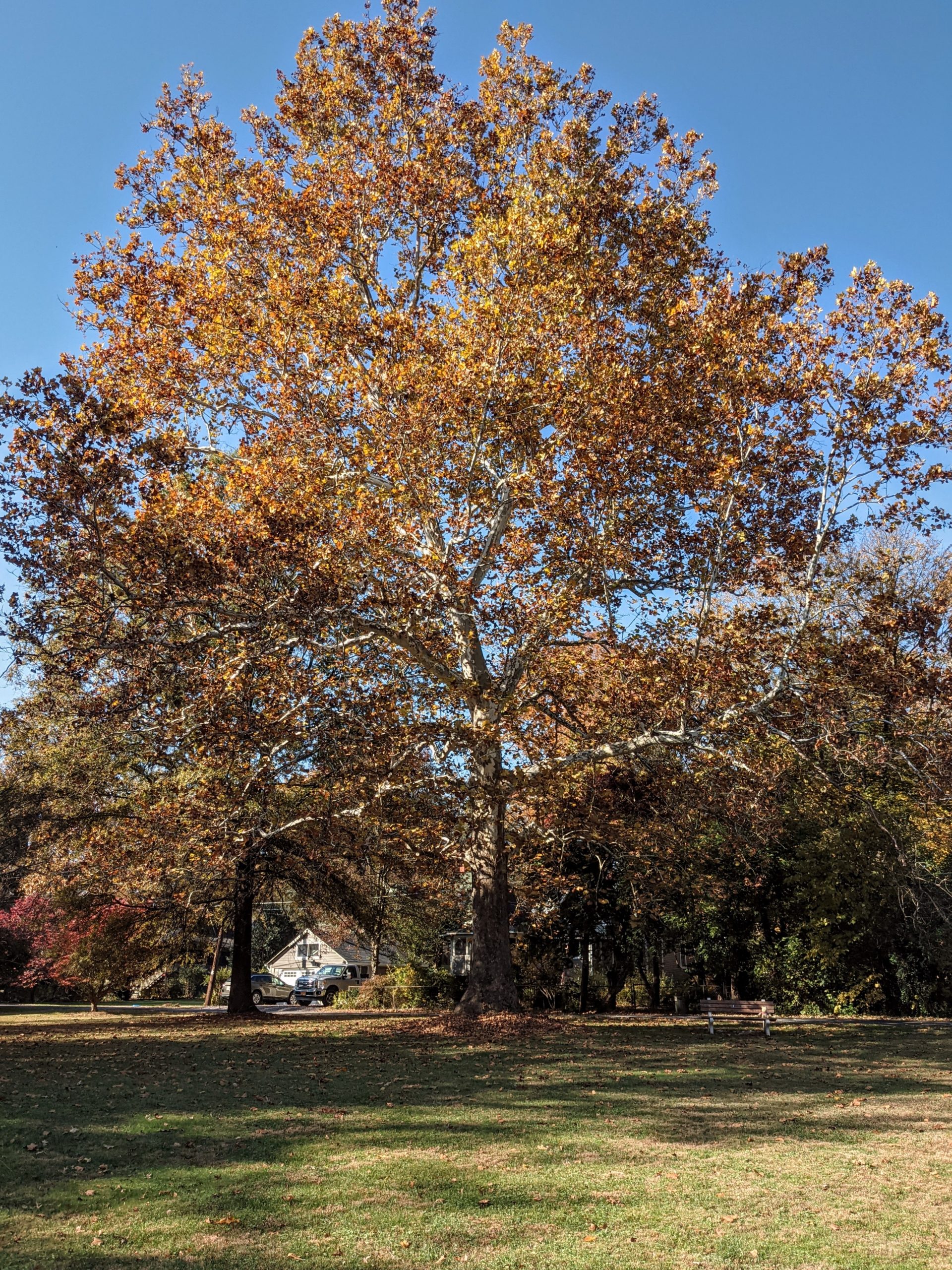Forestry & Beautification Committee
The Forestry and Beautification (F&B) Committee of the Town of Washington Grove oversees the health and maintenance of trees, shrubs and the general appearance of Town land in the residential area of town, including the parks.
The committee liaises to the Town Council through the Council member for Forestry & Beautification. The Woods Committee, including its liaison to the Council, restores and manages the Town’s forest preserve, which encompasses both the East and West Woods.
Through the F&B Committee, interested residents can be part of ensuring our continued tree canopy by:
- selecting new trees for planting each year,
- determining tree health needs,
- developing landscaping plans around public buildings and in our parks,
- supervising installation of new trees, and
- planting annual/perennial plants at the Town entrance and the Town Hall.
F&B meeting times are published in the Town Bulletin; we’d love to have you join us!
Meeting Agendas and Minutes
All agendas and minutes are in the Committee’s Google docs folder at bit.ly/WG-FBCmteDocs.
F & B Committee News
The latest news from the Committee is described in the F&B Committee section of the most recent monthly Town Bulletin.
Committee Documents and Town Policies Related to Tree Stewardship
- Policy for Residents on Town Tree Management
- Memorials Policy (2020, amended 2023) (PDF)
- 2023 Canopy Tree Replacement Proposal (PDF)
- Forest Stewardship Plan 2015 (Bill Bond/Parkton Woodland Services) (PDF) [CAUTION in viewing and downloading: this is a large file — over 40 MB]
- MD DNR Forest Stewardship Plan 2013 (PDF)
- Presentation: Restoration and Maintenance of Forest Preserves 2007 (PDF)
- Urban Forest Management Plan 2006 (Daniel Landry/DPL Consulting) (PDF)
- Report from the Tree Advisory Committee 2000 | PDF version
- Forest Management Plan 1983 (PDF)
- Forest Policy from the 1975 Master Plan (PDF)
- Forestry Committee Report 1973 (PDF)
- Report from the Special Forest Policy Committee 1972 (PDF)
Trees and Other Flora in the Grove
Invasive Vines Not Wanted in the Grove
Before describing two invasive vines, let us consider what makes a non-native plant (also known as an alien plant) invasive and why we should care. An invasive plant must meet two basic criteria: humans have deliberately or accidentally introduced it into an area...
Plant Free Trees to Fight Global Warming
Planting trees is a key tool in the fight against global warming. Climate change is caused by an increase in greenhouse gases (primarily carbon dioxide) in the atmosphere. Trees help to reduce these gases by taking in carbon dioxide from the atmosphere and storing it...
Tree of Heaven (Ailanthus altissima)
An article on the invasive and destructive spotted lanternfly (actually a leafhopper) was recently posted on the Grove website. The article mentioned that tree of heaven (Ailanthus altissima) is a preferred host and should be removed from the landscape. This article...
Out, Out, Damned Spot[ted Lanternfly]!
Montgomery County is now part of a spotted lanternfly quarantine zone. What does that mean and what should we do? Learn more on this page. Native to China, lanternflies first appeared on the eastern U.S. coast in 2014 in Pennsylvania, and were first reported in...
Living Fossil Trees
An attraction of Washington Grove is its great variety of trees, some of which are hidden gems and a pleasure to discover. Discussed here are three “living fossils” from Asia that have no close relatives among other plants. We hope that readers will use this...
Presentation: Going Native—How to Turn Your Yard into a Habitat for Nature
Looking for new ideas for your garden? Hoping for natural solutions that encourage and support a healthy ecosystem for your yard? The Woman’s Club and the Forestry & Beautification Committee co-hosted a free Zoom seminar Going Native: How to Turn Your Yard into a...
Plant Free Trees to Fight Global Warming
Planting trees is a key tool in the fight against global warming. Climate change is caused by an increase in greenhouse gases (primarily carbon dioxide) in the atmosphere. Trees help to reduce these gases by taking in carbon dioxide from the atmosphere and storing it...
Spruce Trees in the Grove
Spruces (genus Picea – meaning pitch in ancient Latin) are usually tall, symmetrical, conical evergreen trees. The genus includes thirty-five species (half native to China), most of which are restricted to cooler regions of the northern hemisphere, growing at high...
Lindens and Hairy Crabweed
Lindens Tilia (linden) is a genus of about 30 species of trees and bushes, native throughout most of the temperate Northern Hemisphere. Two species of lindens are familiar to Maryland landscapes: Tilia cordata (little-leaf) and Tilia americana (American basswood)....
Cicadas…They’re Back!
After 17 years awaiting their big moment, a few million of Washington Grove’s longtime residents will shortly reveal themselves. Our very own periodical cicadas last visited us with gusto in 2004. The reappearance on schedule of what is known as the brood X...
Contact
Georgette Cole
Co-Chair
301-330-6740
georgettewg@gmail.com
Audrey Maskery
Co-Chair
240-205-4756
trees.beautification@gmail.com
Doug Tallamy’s Presentation “Homegrown National Park”
In this talk, which was sponsored by the Town’s Sustainability, Forestry & Beautification, and Woods Committees, Dr. Doug Tallamy, T.A. Baker Professor of Agriculture and Natural Resources at the University of Delaware, explains to Grovers what they can do to support a healthy ecosystem and why that’s important. He describes an approach to conservation that empowers each of us to play a significant role in the future of the natural world. Watch the video here.

